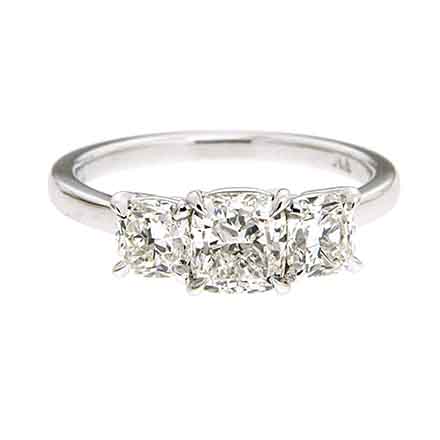About Ring Anatomy
 When searching for the diamond engagement ring or diamond wedding band of your dreams, you may find unfamiliar words. Asking about a ring or looking up its details can be confusing due to the new terms. To better understand what you’re looking for, and to make searching easier, here is some basic ring vocabulary.
When searching for the diamond engagement ring or diamond wedding band of your dreams, you may find unfamiliar words. Asking about a ring or looking up its details can be confusing due to the new terms. To better understand what you’re looking for, and to make searching easier, here is some basic ring vocabulary.
The shank, also known as the band or hoop, is the round part of the ring that encircles the finger. Most engagement rings have shanks made from materials such as gold or platinum. It may be polished to a variety of sheens or textures, engraved, or given decorative edgings. Shanks can be left plain, split or further decorated with diamonds.
Many rings have a gemstone that serves as the main decoration, like a diamond on a solitaire band. Shoulders are the parts which flank the central stone. For wedding bands and such, this is where side stones are mounted. Depending on the design, shoulders may be straight or asymmetrical.
The bezel is a part of the ring that sits on the knuckle side of the finger. It’s often thicker than the rest of the shank, and helps secure the gem. On older rings, the bezel may hold a seal or container for perfumes. Bezel settings use a strip of metal to surround the edge of the jewel to hold it in place.
Prongs are the thin metal bars that grip the edges of a diamond. They hold the jewel while allowing light to travel through the stone, encouraging brilliance. The number of prongs on a diamond may vary, depending on the shape of the stone and the ring’s design. Prongs may be molded or cut from the shank.
Size helps determine if a ring will fit. The band should be loose enough to slide down the finger, but tight enough to discourage slipping. There are tools which measure ring size, as well as free charts online to help tell if your desired ring fits.





